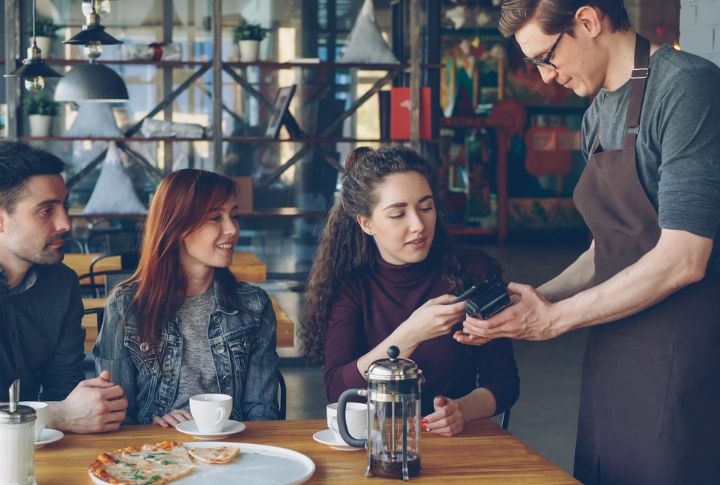
For years, tipping was one of those quiet gestures that defined the American experience. You offered a few extra dollars as a sign of gratitude, a small thank-you for good service, or a pleasant exchange. It was personal, voluntary, and often heartfelt. Yet lately, that once-simple moment has begun to feel uncomfortable.
So, what exactly led to this shift?
The Pandemic Legacy Of Generosity
The roots of this tipping backlash can be traced to the early pandemic years, when the idea of tipping took on a moral dimension. People wanted to help workers on the frontlines who risked exposure while serving food, delivering groceries, or cleaning public spaces. Tips became acts of solidarity, and the country embraced them wholeheartedly.
However, as the world reopened and life began to normalize, something curious happened: the expectations around tipping did not return to what they once were. Instead, the habit expanded. Digital kiosks and delivery apps normalized high default tip options, and before long, the goodwill that once drove the practice began to fade, replaced by a growing sense that something about the system was no longer fair.
Screens That Ask Before You Even Begin
Walk into nearly any cafe today, and you’ll notice the same ritual. You order your drink, the cashier swivels the tablet, and before you take your first sip, you’re asked how much you’d like to tip. Fifteen, twenty, or twenty-five percent—the choices are bright and unavoidable. Even self-checkout machines now include tipping prompts, inviting customers to reward themselves for bagging their own groceries.
The rise of these digital prompts has turned the psychology of tipping. It is no longer a private decision made after receiving service; it’s a public act performed under watchful eyes. The experience has become transactional in a way that feels emotionally draining, as if generosity itself has been programmed into the payment software.
When Convenience Becomes Confusion
And just like that, one of the most frustrating aspects of modern tipping culture is its inconsistency. In some places, service charges are automatically included, yet the screen still asks for an additional tip. Delivery apps present confusing breakdowns of where the money goes, while restaurants introduce “wellness fees,” “employee benefits surcharges,” or “operations support charges.”
Each of these is meant to help staff, but collectively they blur the line between fair pricing and emotional pressure. Customers find themselves unsure which payments go to workers and which go to the pad company’s profits. This lack of clarity fuels mistrust.
The Rise Of Tip Fatigue
“Tip fatigue” has become the phrase of the moment, capturing what millions of Americans feel every time they’re asked to add one more dollar to another transaction. It’s not that people have stopped caring about workers. Rather, they’ve grown weary of being prompted to tip for every minor exchange.
On social media, videos of customers refusing to tip on pre-packaged snacks or automated services have gone viral, signaling a broader mood shift. What was once a quiet act of generosity is now the subject of public debate, as people are openly questioning the boundaries of tipping culture and asking where it all ends.
The Global Perspective
The intensity of America’s tipping culture is unusual compared to other countries. In Japan, tipping is rare and sometimes considered disrespectful because good service is viewed as standard, not exceptional. In much of Europe, tips are modest and often included in the bill, leaving customers free of moral calculus.
In contrast, the American system places emotional and financial responsibility on the customer’s shoulders. This difference reflects a deeper national attitude toward labor, merit, and money. The current tipping backlash may therefore signal a growing discomfort with how value and gratitude are structured in American society.
Changing The Rules
As frustration grows, some businesses are experimenting with new approaches. A few restaurants have adopted “no tipping” models, replacing gratuities with higher menu prices and guaranteed wages. The idea is simple: pay workers fairly upfront, and let customers relax.
While some establishments have succeeded, others have struggled as price-conscious customers resist higher bills. The transition challenges both long-held customs and economic expectations. Yet it also points toward an evolving understanding of fairness.
The Pause Before The Tap
As Americans stand at the checkout counter, credit card in hand, there is often a brief pause before they tap the screen. It is a pause filled with calculation and reflection—a second to decide what feels fair. That hesitation says more about where the culture is headed than any survey or statistic could.
In short, the great tipping backlash is the sound of a society reconsidering how generosity should look in a world where every transaction has become a moral choice. Perhaps that pause, small as it seems, is where change begins.
